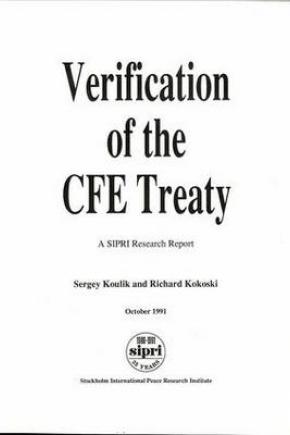Verification of the CFE Treaty
Signed in November 1990, the Treaty on Conventional Armed Forces in Europe (CFE) represents a watershed in the history of arms control. This is due in no small measure to the carefully designed verification structure upon which the Treaty is founded. This thorough and detailed verification regime should provide for a relatively trouble-free ratification process and hopefully the smooth conduct of the various stages of Treaty implementation as well. The recent fast pace of European and international developments and events has understandably drawn much of the attention away from the CFE process. However, as unilateral reductions and restructuring of conventional forces in Europe proceed, it is critical that the legally binding obligations set forth in the Treaty and the means through which compliance with those obligations will be ensured are well understood. Furthermore, the negotiations and their outcome hold many lessons for future, potentially more ambitious arms reductions. The main purpose of this report is to analyse and provide insight into these arrangements, the associated problems which may arise and their potential solutions.
With the changes in the European landscape, quantitative elements embodied in the Treaty have already taken on less relevance. However, functional elements, including the verification structure and its future implementation, will remain important, perhaps assuming an even greater role in the years to come than was expected when the Treaty was signed. It is hoped that the exploration of these issues as presented in this report will continue to be of use in providing information and understanding as an aid to ensuring both a rapid ratification process and the successful implementation of the CFE Treaty in the months and years to come.
1. Introduction
2. The November 1990 documents
3. The key provisions of the CFE Treaty
4. Verification
5. Verification provisions of the Treaty
6. Other important provisions of the Treaty
7. National and multinational technical means of verification
8. On-site inspection
9. Further verification possibilities
10. Steps for joint verification management
11. Challenges for CFE verification
12. Past verification experience and the Treaty
13. Conclusions
Appendix A. Treaty on Conventional Armed Forces in Europe
Appendix B. CFE Treaty rules for designated permanent storage sites for TLE (AVLBs included)
Appendix C. Main Treaty provisions regarding the reclassification of specific models or versions of combat-capable trainer aircraft into unarmed trainer aircraft and the recategorization of multi-purpose attack helicopters
Appendix D. Main Treaty provisions regarding inspection
Appendix E. The Joint Consultative Group
Appendix F. Main Treaty provisions regarding notification and exchange of information
Appendix G. Elements of the Annex on the format for the exchange of information
2. The November 1990 documents
3. The key provisions of the CFE Treaty
5. Verification provisions of the Treaty
6. Other important provisions of the Treaty
7. National and multinational technical means of verification
9. Further verification possibilities
10. Steps for joint verification management
11. Challenges for CFE verification
12. Past verification experience and the Treaty
Appendix A. Treaty on Conventional Armed Forces in Europe
Appendix B. CFE Treaty rules for designated permanent storage sites for TLE (AVLBs included)
Appendix D. Main Treaty provisions regarding inspection
Appendix E. The Joint Consultative Group
Appendix F. Main Treaty provisions regarding notification and exchange of information
Appendix G. Elements of the Annex on the format for the exchange of information

